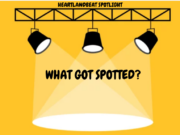Coming Events
August 26, Crop Diagnostic Clinic, 8:00 a.m., ARDC near Ithaca. http://ardc.unl.edu/crop.shtml
August 27, Crop Diagnostic Clinic, 8:00 a.m., ARDC near Ithaca. http://ardc.unl.edu/crop.shtml
August 28 – September 7, Nebraska State Fair. http://www.statefair.org/
Crop Diagnostic Clinics Planned
Keith Glewen, Extension Educator in Saunders County has planned two excellent Crop Diagnostic Clinics for August 26th and 27th at the ARDC near Mead. They are:
Aug. 26 topics include: Management Considerations to Improve the Physical, Chemical and Biological Properties of Soil; Measuring Bulk Density, Porosity and Infiltration; Physical Soil Properties; Cover Crops for Improving the Soil; What is Soil Biology?; Soil Characteristics, Productivity and Landscape Position; and Chemical Soil Properties.
Aug. 27 topics include: Late Season Disease Diagnosis and Update; Double Duty Cover Crops: Improving the Soil and Producing Forage; Applied Soybean Physiology: Why Soybeans Do What They Do!; The Future of Row Spacing and Corn Plant Populations; Evaluating Hail Damage in Corn; and Crop Scene Investigation (CSI).
Certified Crop Adviser credits been applied for and are pending approval for this clinic. For more information or to register go to: http://ardc.unl.edu/cmdc.shtml.
Solar Design and Installation Hands-On Workshop
A week long hands-on solar design and installation workshop will be held September 28 to Oct 2. About half the time will be classroom sessions and half on site construction.Â
Topics will include:Â
· Introduction to Solar PV electronics and components
· Basics of electricity, measuring, tools and safety
· Solar siting – where to locate the panels, sun angles
· Capabilities and limitations of solar PV
· Electrical codes, state and federal policy, tax credits and economics
· Building a rack
· Attaching inverters and other components
· Grounding and other wiring
· Solar modules
· Wire management and final appearance
· Working with your utility and electrical inspection
Instructors will be John Hay – Department of Biosystems Engineering, University of Nebraska-Lincoln and Jon Dixon – Dixon Power Systems.
For more information: http://york.unl.edu/crops-future and click on the appropriate link.
Establishing Turf This Fall
Typically we receive many questions about establishing turf in the spring because we are all excited for spring and we receive very few questions in the fall because we are tired of mowing and watering the grass. In reality now is by far the better time to establish those cool season turf cultivars.
We just had a recent turf-info story about “Preparing to Seed this Fallâ€. This update which includes three how to videos is available at http://turf.unl.edu/ Click on the Turf-info link. You can also check our Turf Advice publications.Â
Our Turf Specialists indicate that “Tall fescue and Kentucky bluegrass are the best cool-season grasses for Nebraska lawns, whereas buffalograss is the best warm-season grass for Nebraska lawns.â€Â
Now is a really great time to get cool season turf established, but it’s too late for buffalograss. Give me a call if you have questions about establishing your turf. A couple of keys include good seed selection and proper seedbed preparation. Good Luck!
Cropping Update
How are your crops doing? My ETgages dropped only about 1.05†for the week. With the crop coefficient of 1.1, the average water use has been about 1.16†for the week or about .17â€/day. With our rain of about 1.15†last Tuesday we about broke even for the week. For the latest crop water use or ET go to: https://nawmn.unl.edu/ and click on view weekly ET data.Â
Now’s an important time to monitor soil moisture and crop stages so that we dry down the soil moisture at the end of the season, but at the same time don’t short our crops. Corn at beginning dent requires 5.00 inches of water to maturity, corn at ¼ milk line requires 3.75 inches until maturity, corn at ½ milk line only needs 2.25 inches. Soybeans at R5 (beginning seed enlargement) will require 6.5 inches of additional moisture, while soybeans at R6 (end of seed enlargement) need 3.5 inches and soybeans at R6.5 (the leaves begin to yellow) will need 1.9 inches of water. Looks like we have a couple of chances for rain this week, so we’ll see what happens.
Be sure to check out CropWatch for the update on corn and soybean disease updates  http://cropwatch.unl.edu/.
Cash Rent Increases
I saw an interesting article that both tenants and landowners should check out in the latest Nebraska Farm Business Newsletter. It included a chart that shows the data collected by Nebraska Farm Business, Inc. for the average cash rent paid in the prior 10 years. The average cost has doubled from $127.71 in 2005 to $258.11 in 2014 (peak of $274.74 in 2013). The cost now accounts for 31% of the total cost of growing irrigated corn.
It’s not a one sided story, landowners have also seen their costs go up. Check out the story at: www.nfbi.net and click on the Article & Newsletters tab.
































